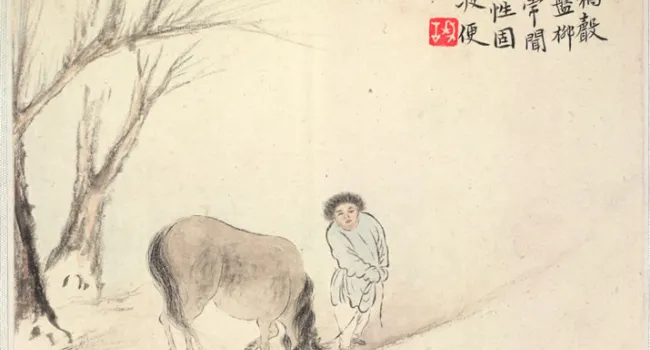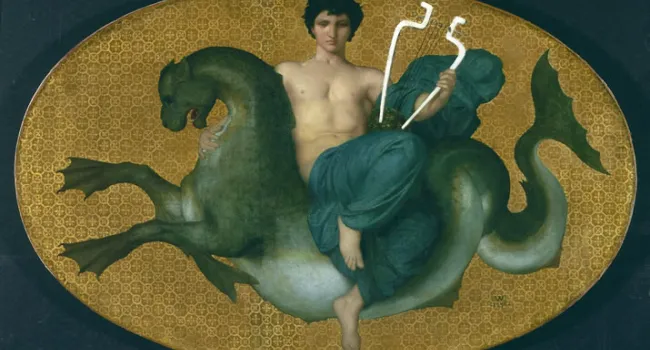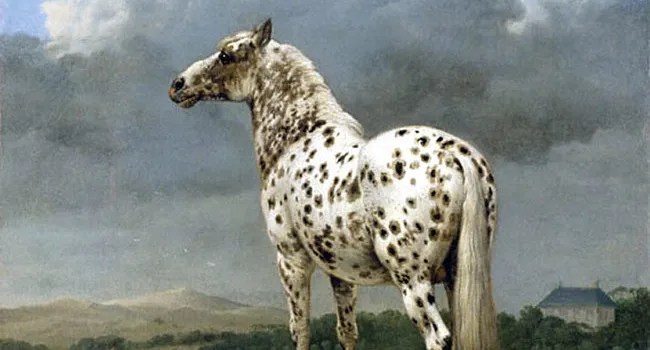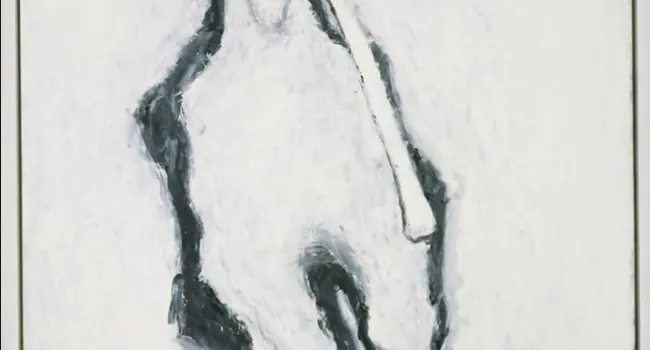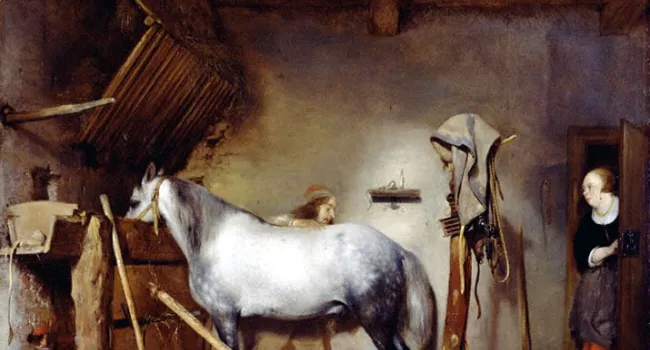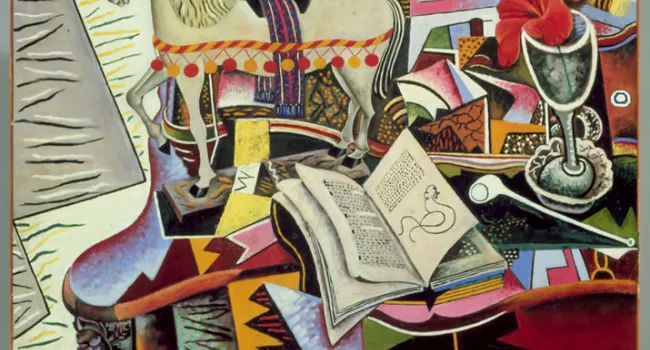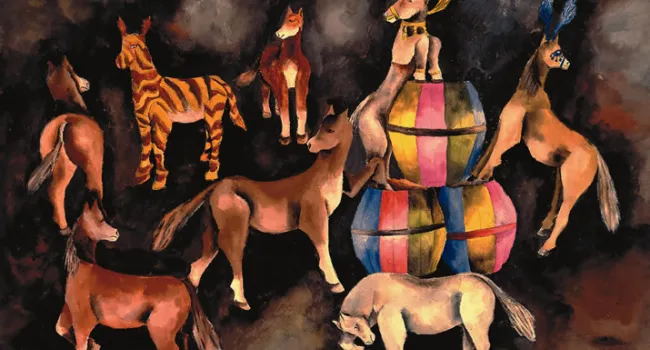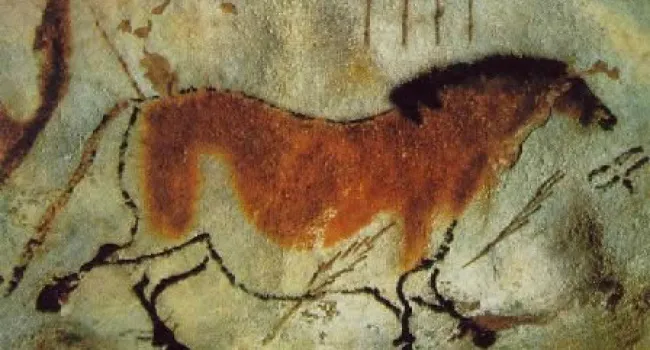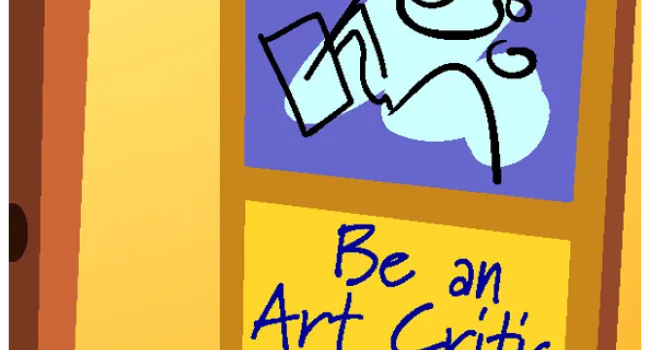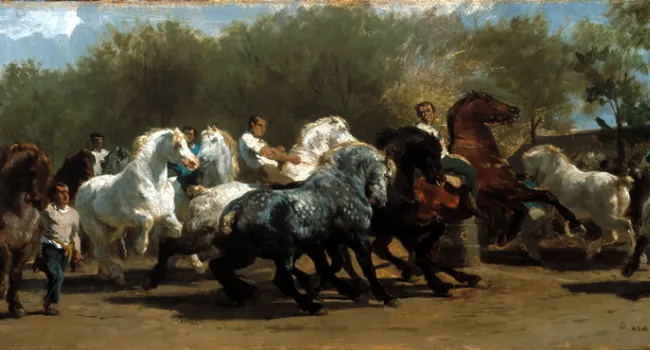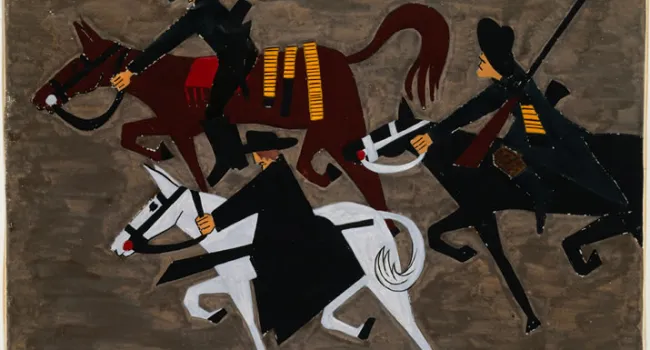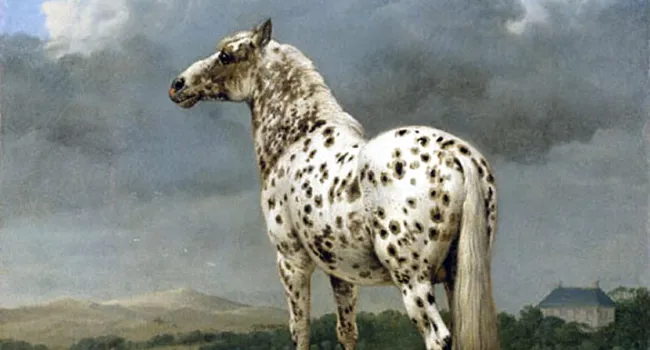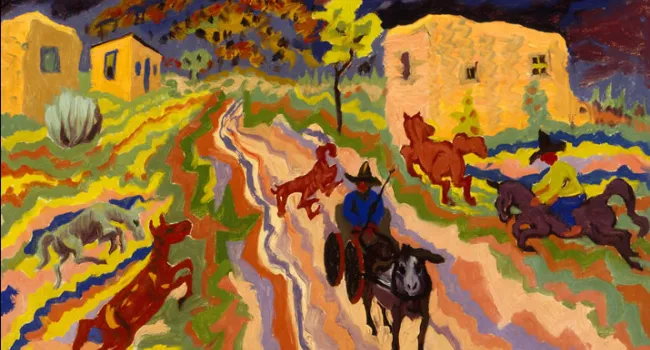
Ando Hiroshige
A Closer Look
In Fuji from Kogane-Go-Hara, Shimosa Hiroshige wants the viewer to notice Mt. Fuji on the horizon. He uses an Asian art technique called the split fountain, a gradual change from one color to another. Do you see it in the sky, ground and water? Have you seen a split fountain in real life? Maybe you have noticed it in a sunset. Look at the sunset in your neighborhood during the next few days and see if there's a gradual change in the atmospheric colors.
About the Painting
Fuji from Kogane-Go-Hara, Shimosa is actually not a painting but a woodblock print or woodcut. This is the oldest form of printmaking, in which the artist makes a sketch on a piece of wood and gouges it out with sharp tools. Ink is applied to the parts of the wood that remain and paper is pressed onto the ink. The Japanese artists of the 19th century were experts in making colorful woodcuts. Mt. Fuji, the sacred mountain of Japan, was one of their favorite subjects. Hiroshige made two series of prints of Mt. Fuji.
About the Artist
Ando Hiroshige was born in Edo, Japan (now Tokyo), the son of a fireman. When he was twelve both his parents died and he inherited his father's job. But he had seen the prints of Hokusai, a famous painter and wood engraver, and he knew he wanted to be an artist. Ultimately Hiroshige became as well known as Hokusai. Their school of art is called Ukiyo-e, which means "pictures of the floating world," or everyday life.
Write About It
- Make a list of what you see.
- How did the artist use the elements and principles of design?
- What do you think the painting means? How does it make you feel?
- Select two paintings to compare & contrast.
